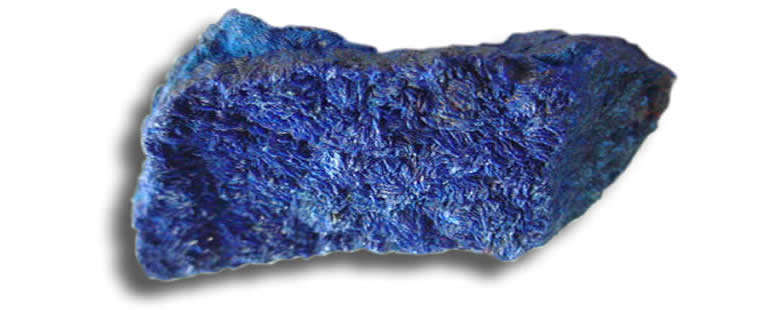Your Details
Your Details
|
Reviewed By Andreas Zabczyk
Blue Azurite Gemstones Azurite Rough
Azurite is a deep blue copper mineral that is often used as a gemstone in jewelry and ornamental objects. It is known for its striking blue color and is commonly found in association with malachite, another copper mineral. Azurite is valued for its vibrant color and is often used in cabochon cuts to showcase its beauty. Sometimes interesting specimens are found containing both azurite and malachite in the same stone. These are usually referred to as azure-malachite. Azurite has been known since ancient times and was widely used as a pigment and fabric dye in the middle ages. It bears similarities to lapis lazuli, though they are chemically quite different since the blue color of lapis is derived from lazurite, a sodium silico-aluminate in a sulfur matrix. Azurite can also be confused with sodalite, a chloric sodium aluminum silicate. Azurite is a fairly soft stone with a hardness of 3.5 to 4 on the Mohs scale. It has a specific gravity of 3.7 to 3.9, so it has similar density to chrysoberyl and garnet. Azurite's refractive index is highly variable, ranging from 1.720 to 1.848.  Azure-Malachite Cabochon
Today azurite is mainly a collector's stone, highly regarded for its intense color and vitreous luster. It is often used for ornamental objects or cut en cabochon. It is sometimes used in jewelry, but it has a tendency to weather over time - prolonged exposure to bright light, heat and open air all tend to reduce the intensity of its color over time. It is important not to heat azurite when setting it in jewelry; all mounting of azurite specimens should be done at room temperature. Azurite is found in many locations in the world. The most famous sources are the USA (Utah, Arizona and New Mexico), Mexico, Namibia, the Congo, Morocco and Australia. At one time outstanding azurite specimens were found in Chessy near Lyon, France and French azurite was sometimes referred to as chessylite. |
